
Brian Kennett
Amateur Chef and Traveling Foodie Extraordinaire
6 Week Air Dried Beef Ribeye: a recipe to die for
6 Week Air Dried Beef Ribeye was a little experiment one day. Mates of mine had been talking about it, and I happened to be in Parkway. So boom, Harvey Norman to buy a little fridge. Cold Storage to buy a load of Malden Salt Flakes. And finally a whopping two rib, beef ribeye steak from The Butcher. All ready so now let’s let games commence.
So this is a waiting game. It’s so so simple to do, you just have to have patience. Then, your 6 Week Air Dried Beef Ribeye should come out perfect. I think I could have even left her longer. Here’s how you do it.
Take one cooling fridge – best to get a new one so the meat does not absorb other fridge smells. Lay the steak, fat side down on a middle shelf. Fill a baking tray with the Malden Sea Salt, and place that beneath the shelf. Shut the door! See her in 6 weeks. Here is a photo journey of my 6 Week Air Dried Beef Ribeye.
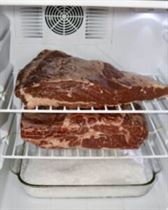

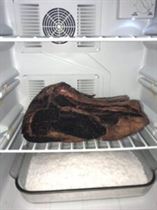
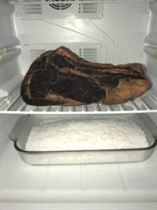
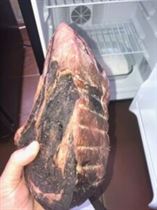
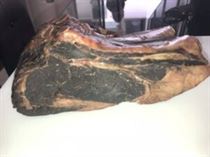

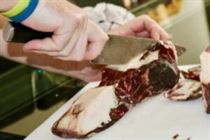
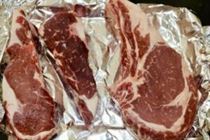

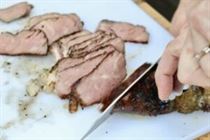
Click here to watch a wee YouTube of her ‘unveiling’ – excuse my gut
6 Week Air Dried Beef Ribeye, was a great experience. It has given me massive confidence now to go for a little longer, and try new beef cuts like the brisket in there. It was cracking meat. It truly was. A little sea salt and cracked black pepper is all.
ENJOY!!!
Click HERE to follow Islifearecipe.net on YouTube
Air Dried Beef Steak
Air drying, also known as “dry aging,” is a process used to enhance the flavour and tenderness of meat, particularly air dried beef steaks. It involves allowing the meat to rest in controlled conditions where it is exposed to air for an extended period. During this time, the meat’s enzymes break down muscle fibres and connective tissues, resulting in a more tender and flavourful steak. The process also leads to the evaporation of moisture, concentrating the meat’s flavour.
Here’s a general outline of how you can air dry steaks:
-
Choose the Right Meat for air dried beef: Not all cuts of beef are suitable for dry aging. Cuts with a good amount of marbling and fat content tend to yield the best results. Prime cuts like ribeye, sirloin, and strip loin are commonly used for dry aging.
-
Purchase Fresh Meat: Start with high-quality, fresh meat from a trusted source. The meat should have good marbling and be free from any signs of spoilage.
-
Preparation of air dried beef: Pat the steaks dry with paper towels to remove excess moisture. This helps to encourage the drying process and prevents the growth of unwanted bacteria.
-
Use a Refrigerator: Dry aging should be done in a controlled environment to prevent spoilage. A dedicated refrigerator with precise temperature and humidity controls is ideal for this purpose. You might also use specialised dry aging bags or mats that allow air circulation while preventing contamination.
-
Temperature and Humidity: The optimal conditions for dry aging are around 34°F to 38°F (1°C to 3°C) and a humidity level of around 85-90%. These conditions slow down the growth of harmful bacteria while allowing the enzymatic reactions that enhance flavour and tenderness to occur.
-
Air Circulation: Proper air circulation is essential to prevent the growth of mould and bacteria on the meat’s surface. Use a fan or ensure that your dedicated refrigerator has good ventilation.
-
Aging Duration for air dried beef: The duration of dry aging depends on personal preference. Typically, steaks are aged for around 14 to 45 days. Longer aging periods tend to result in more pronounced flavours and tenderness.
-
Trimming: After the aging period, the steaks will have developed a hard, dry outer layer. Trim this layer away to reveal the tender, flavourful meat beneath.
-
Cooking: Once the steaks have been trimmed, they are ready to be cooked. Dry-aged steaks cook faster than non-aged ones due to the reduced moisture content, so keep a close eye on their cooking progress.
-
Enjoy: Dry-aged steaks have a distinct, concentrated flavour and tenderness that many steak enthusiasts appreciate. Savour the unique experience!
It’s important to note that dry aging at home can be a bit challenging due to the need for precise temperature and humidity control. Additionally, there’s a risk of spoilage and foodbourne illness if not done correctly. If you’re new to the process, you might want to consider purchasing dry-aged steaks from a reputable butcher before attempting it yourself.

